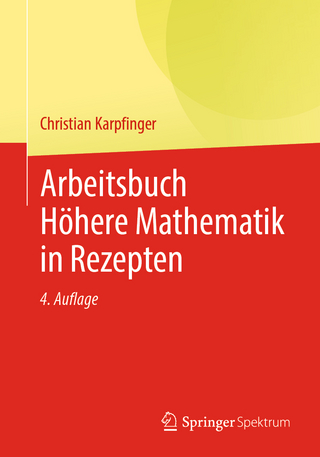
Linear Models and the Relevant Distributions and Matrix Algebra
Chapman & Hall/CRC (Verlag)
978-0-367-57203-7 (ISBN)
Linear Models and the Relevant Distributions and Matrix Algebra provides in-depth and detailed coverage of the use of linear statistical models as a basis for parametric and predictive inference. It can be a valuable reference, a primary or secondary text in a graduate-level course on linear models, or a resource used (in a course on mathematical statistics) to illustrate various theoretical concepts in the context of a relatively complex setting of great practical importance.
Features:
Provides coverage of matrix algebra that is extensive and relatively self-contained and does so in a meaningful context
Provides thorough coverage of the relevant statistical distributions, including spherically and elliptically symmetric distributions
Includes extensive coverage of multiple-comparison procedures (and of simultaneous confidence intervals), including procedures for controlling the k-FWER and the FDR
Provides thorough coverage (complete with detailed and highly accessible proofs) of results on the properties of various linear-model procedures, including those of least squares estimators and those of the F test.
Features the use of real data sets for illustrative purposes
Includes many exercises
David Harville served for 10 years as a mathematical statistician in the Applied Mathematics Research Laboratory of the Aerospace Research Laboratories at Wright-Patterson AFB, Ohio, 20 years as a full professor in Iowa State University’s Department of Statistics where he now has emeritus status, and seven years as a research staff member of the Mathematical Sciences Department of IBM’s T.J. Watson Research Center. He has considerable relevant experience, having taught M.S. and Ph.D. level courses in linear models, been the thesis advisor of 10 Ph.D. graduates, and authored or co-authored two books and more than 80 research articles. His work has been recognized through his election as a Fellow of the American Statistical Association and of the Institute of Mathematical Statistics and as a member of the International Statistical Institute.
David Harville served for 10 years as a mathematical statistician in the Applied Mathematics Research Laboratory of the Aerospace Research Laboratories at Wright-Patterson AFB, Ohio, 20 years as a full professor in Iowa State University’s Department of Statistics where he now has emeritus status, and seven years as a research staff member of the Mathematical Sciences Department of IBM’s T.J. Watson Research Center. He has considerable relevant experience, having taught M.S. and Ph.D. level courses in linear models, been the thesis advisor of 10 Ph.D. graduates, and authored or co-authored two books and more than 80 research articles. His work has been recognized through his election as a Fellow of the American Statistical Association and of the Institute of Mathematical Statistics and as a member of the International Statistical Institute.
Introduction. Matrix Algebra: a Primer. Random Vectors and Matrices. The General Linear Model. Estimation and Prediction: Classical Approach. Some Relevant Distributions and Their Properties. Confidence Intervals (or Sets) and Tests of Hypotheses.
| Erscheinungsdatum | 01.07.2020 |
|---|---|
| Reihe/Serie | Chapman & Hall/CRC Texts in Statistical Science |
| Sprache | englisch |
| Maße | 178 x 254 mm |
| Gewicht | 453 g |
| Themenwelt | Mathematik / Informatik ► Mathematik ► Algebra |
| ISBN-10 | 0-367-57203-6 / 0367572036 |
| ISBN-13 | 978-0-367-57203-7 / 9780367572037 |
| Zustand | Neuware |
| Haben Sie eine Frage zum Produkt? |
aus dem Bereich


